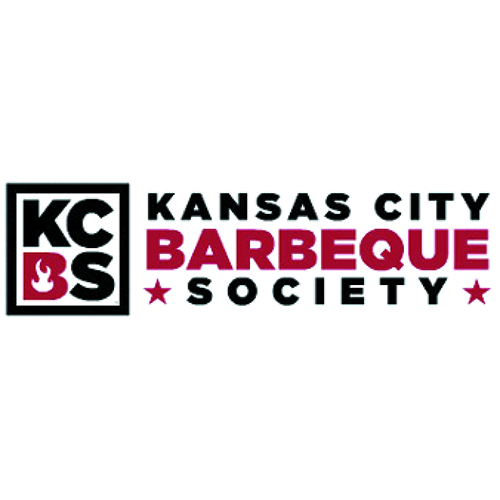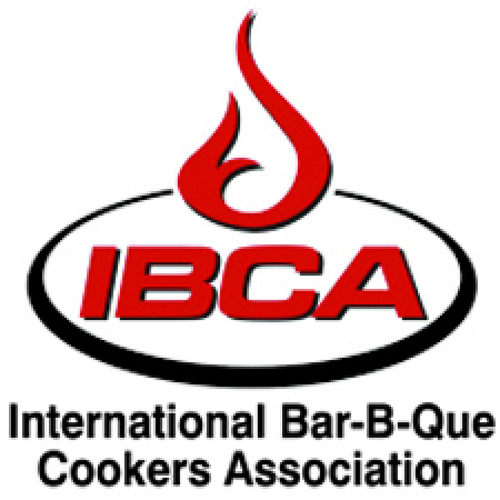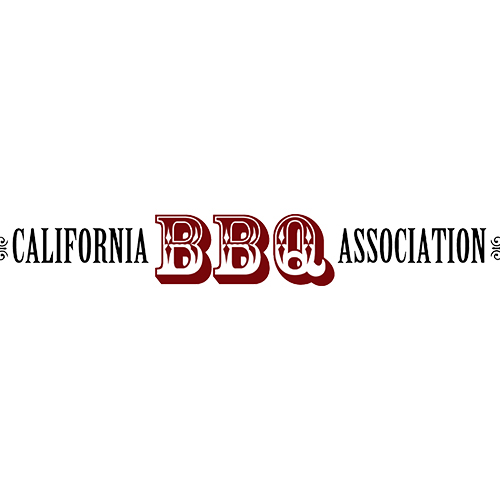Drip Pans And Water Pans, How To Use Them, What To Put In Them, How To Clean Them

Meathead
Drip pans and water pans are really useful but badly misunderstood.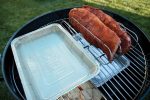
Let’s begin by defining a drip pan and a water pan. Sometimes they are the same thing, sometimes they are different.
Drip pans
Drip pans go under the food. The purpose of a drip pan is to collect the flavorful juices that come from the meat for use in a sauce or stock, to keep them off the flame and prevent flareups, and, if you are using both a drip pan and a water pan, to keep oil from coating the water in the water pan and preventing evaporation.
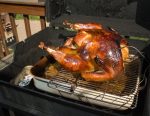 My recipe is a good example of how to put a drip pan to use. The pan is filled with water, wine, herbs, carrots, onions, celery, apples, and when the bird is done, you have a smoked turkey stock that becomes the base for the most incredible gravy. This will also works for beef and pork, but not for lamb. Lamb drippings don’t usually make good gravies or sauces.
My recipe is a good example of how to put a drip pan to use. The pan is filled with water, wine, herbs, carrots, onions, celery, apples, and when the bird is done, you have a smoked turkey stock that becomes the base for the most incredible gravy. This will also works for beef and pork, but not for lamb. Lamb drippings don’t usually make good gravies or sauces.
When you use a drip pan, start with at least 1/4-inch of water or wine or stock or beer, otherwise when the drips hit the pan they will burn. Keep an eye on the pan so it doesn’t dry out and burn all your precious gravy. You can check often, it won’t hurt. The old rule that if you’re lookin’ you ain’t cookin’ is another myth. I’ll bust that myth next month.
Water pans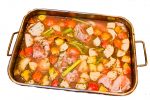
Water pans go over the heat source. Some smokers, like the Weber Smokey Mountain, come with a water pan built in. Water pans are not designed for making gravy although you can use it for that if it is clean.
Let’s dispel a myth first. A water pan does not do much to keep your meat moist. In order to cook food fuel and oxygen are combusted and energy is produced. In order to combust charcoal, logs, pellets, or gas, you need a lot of oxygen. While you are cooking an enormous of air, is moving through the cooker and the humidity is very low. A reader measured the airflow through his Peoria (offset) Smoker at 268 cubic feet per minute at the exhaust stack when cooking at 250°F with a very small fire.
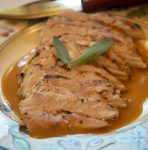 And while the water pan might get hot, it might even steam a bit, it takes a long time for it to evaporate. The small amount of moisture it contributes to the air in the cooker barely raises the humidity. And if the humidity is low, water also evaporates from the food. To prevent the water from leaving your food you would need to raise the humidity to near 100%, an impossibility without expensive special equipment such as a CVap machine. This myth is busted.
And while the water pan might get hot, it might even steam a bit, it takes a long time for it to evaporate. The small amount of moisture it contributes to the air in the cooker barely raises the humidity. And if the humidity is low, water also evaporates from the food. To prevent the water from leaving your food you would need to raise the humidity to near 100%, an impossibility without expensive special equipment such as a CVap machine. This myth is busted.
But the water pan does have an interesting impact on the food. Let’s say the temperature in a smoker is 225°F the water pan is up to about 190°F, and the meat is fresh from the fridge at 38°F. In practice the water in a water pan rarely goes above 190°F because it cools as it evaporates, a process called evaporative cooling. Think of cutting the lawn on a hot day. As your sweat evaporates, it cools you.
The moisture from the pan will condense on the meat because it is so cold, just like the way steam condenses on your bathroom mirror as you shower. It is a known phenomenon called thermophoresis. Small particles are attracted to cool surfaces. Even smoke particles. And condensation makes the food sticky. Water vapor mixes with combustion gasses in smoke and sticks to the wet food improving the flavor. Sodium nitrite in the smoke also sticks and it creates the smoke ring. So that’s why you want to put meat from the fridge into a smoker, not meat that has been sitting around at room temp. It collects more smoke particles and moisture, and when the meat is moist, smoke particles stick better.
The condensation also cools the meat prolonging the cook, and that’s good too, allowing more time for the fat and connective tissues to melt.
Since water cannot go higher than 212°F, a water pan is good for moderating the average temp on a grill or smoker. It gets up to about 190°F and holds there, a large heat sink stabilizing your cooking temp because water temp takes longer to rise and fall than air temp. And that’s good.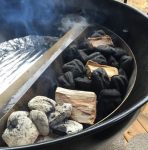
A water pan can block direct flame when you need to cook with less energy. Just put it over the heat source and you go from powerful direct infrared energy to milder in- direct convection heat. It even evens out hot spots.
There is one notable exception. In electric smokers where there is little air movement because there is no combustion, the water pan can add humidity to the atmosphere in the cooker and help keep the oven from drying out your food.
What goes in the water pan?
Pitmasters argue over what should go in the water pan. They reason that if water vapor condenses on meat doesn’t it stand to reason that if I fill the water pan with wine, beer, or apple juice, throw in an onion and some spices, it will flavor the meat? Alas, no. All the fla- vor compounds in beer, for example, are at most 3.5% of the weight: Less than 2.5% sugars with less than 1% a mix of proteins, minerals, small chain organic acids, and esters, aldehydes, and ke- tones, which are a mix of acids and alcohols. Not nearly enough to add flavor. Drink the beer. Put the spices on the meat. Just use hot water. Don’t waste your money. Many of the compounds in other liquids will not evaporate. Another myth busted. If you want flavor, use a rub.
Some folks like to put sand, dirt, gravel, or terra cotta in the water pan. They do a decent job of stabilizing temperature, but the advantage of water is it cannot go higher than 212°F. Sand etc. can all get much hotter than that.
There is a reson we call it a water pan. Put water in it. That’s all. Try to use hot water. Cold water will cool your oven down a lot and should only be used if your cooker is running hot and you need to cool it down. And fill the pan to just below the lip so you don’t have to keep filling it. Put it above the hottest place in your cooker so more water will evaporate.
Enhancing humidity
The AmazingRibs.com science advisor Prof. Greg Blonder, says “If you want to increase humidity, and you do, fill the pan with those red lava rocks sold at garden stores, and then add the water, but don’t cover the rocks. They are very porous so they act like sponges, and the large surface area pumps more moisture into the air. And don’t let fat drip into the pan because it will quickly coat the surface and prevent evaporation.”
Cleanup
If you line a water pan with foil, cleanup will be a lot easier. When you are done, you will have a pan full of smoky water and fat. Let the pan cool and the fat should solidify. If not, throw in some ice cubes. Then it is easy to peel off the fat and discard it in a garbage bag. Do not dump it into the sink or toilet.
Discard the non-fat liquids in old milk bottles, or flush them down the toilet (be prepared to clean the toilet after). If you are using charcoal you could mix the drippings with ash and throw them out with the trash. Don’t pour them on the lawn or garden. They will just attract critters.
Meathead is the barbecue Hall of Famer who founded AmazingRibs.com, by far the world’s most popular outdoor cooking website. He is the author of “Meathead, The Science of Great Barbecue and Grilling” a New York Times Best Seller that was also named one of the “100 Best Cookbooks of All Time” by Southern Living magazine. For 2,000+ free pages of great barbecue and grilling info, visit AmazingRibs.com and take a free trial in the Pitmaster Club.
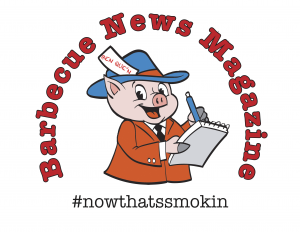
Originally it started as a printed newsletter to let avid barbecuers keep track of upcoming events and results from past events. Today we have evolved into a barbecue and grilling information super highway as we share information about ALL things barbecue and grilling.
© 2022 National Barbecue News: Designed by ThinkCalico



